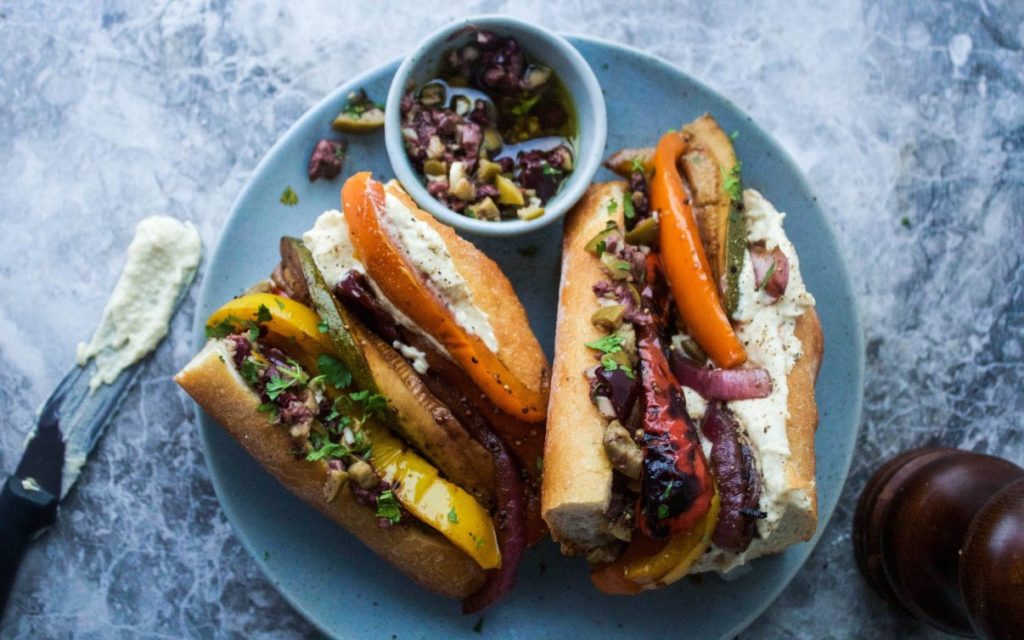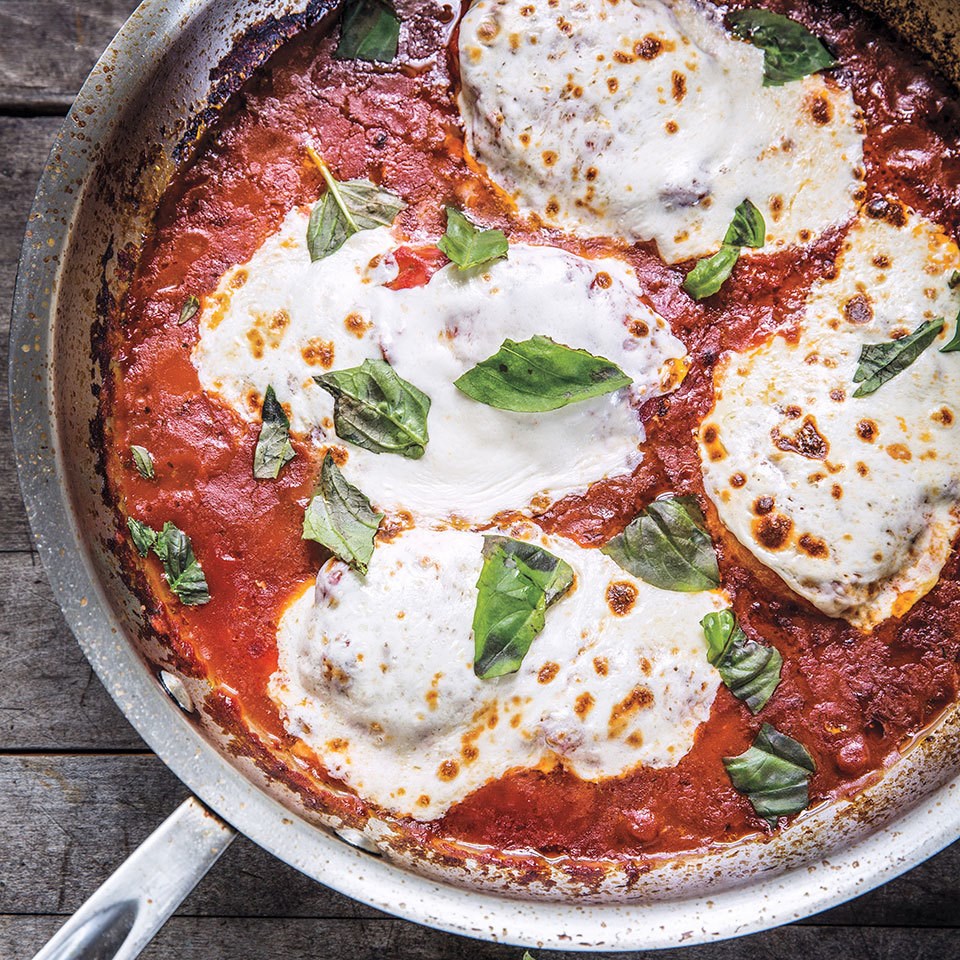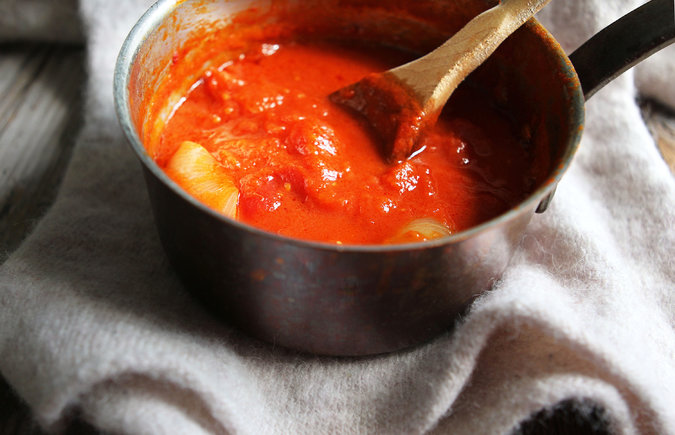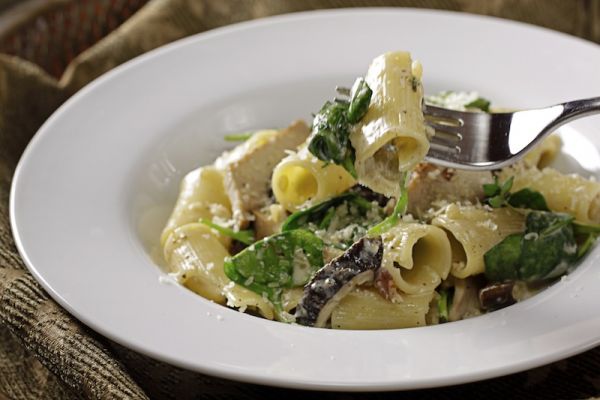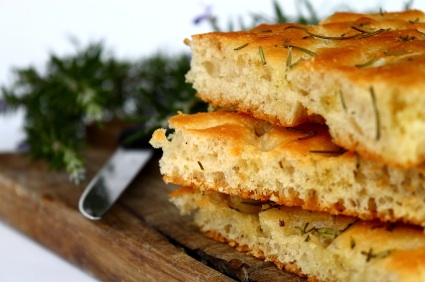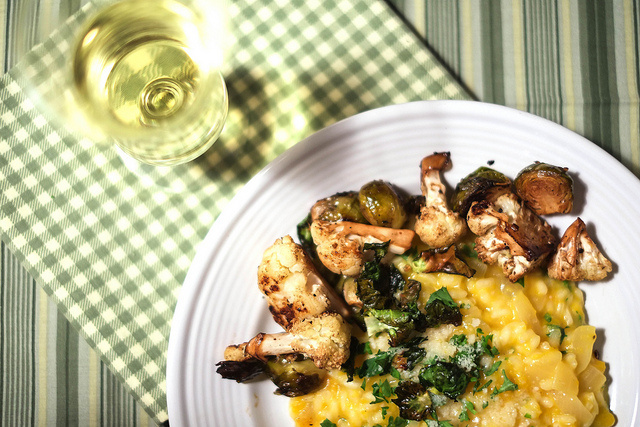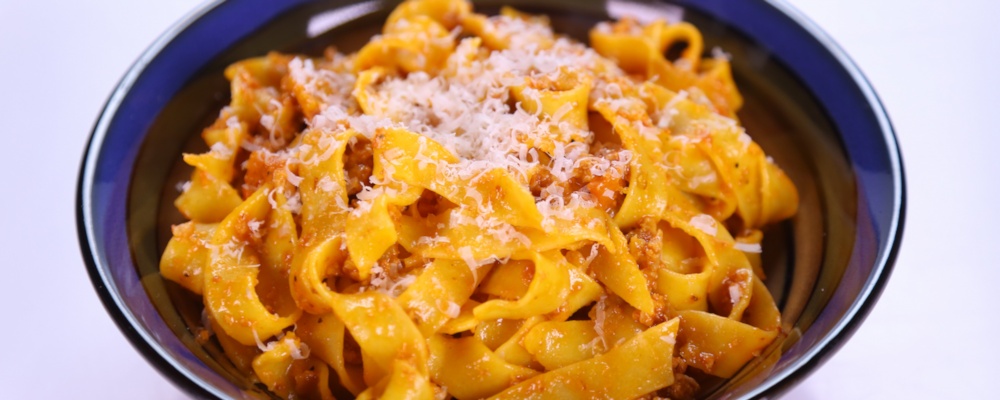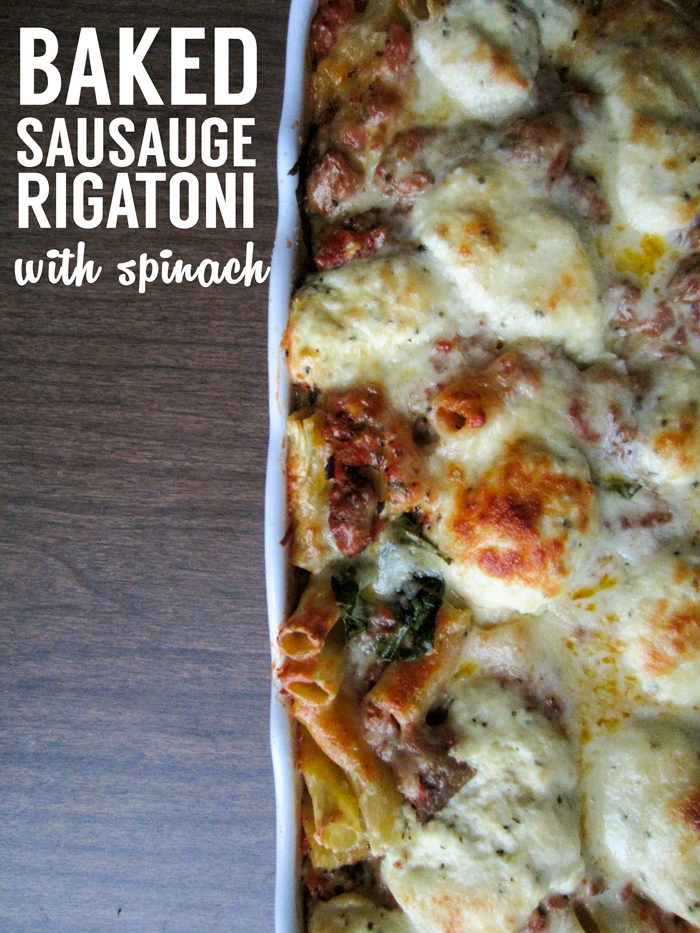Lombardy-Style Rice with Chicken
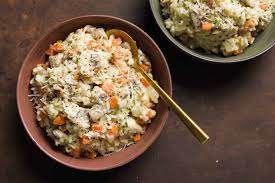
This humble dish from the Lombardy region of northern Italy is known as riso alla pitocca. With familiar flavors and a creamy consistency from the starchiness of Arborio rice, it’s pure comfort food, Italian style. Riso alla pitocca is in some ways similar to risotto, but is simpler to cook because there’s no need to add liquid in multiple additions, nor for careful or continuous stirring. We do, however, stir the rice vigorously at the end, after the grains are tender, to help create a richer, thicker, more velvety consistency. Don’t use chicken breasts, which are too lean and easily overcook. Chicken thighs are more flavorful, as well as more resistant to overcooking.
1 pound boneless, skinless chicken thighs, trimmed and cut into 1-inch pieces
Kosher salt and ground black pepper
2 ½ C. low-sodium chicken broth
2 T. extra-virgin olive oil
1 medium yellow onion, chopped
2 medium carrots, chopped
2 medium garlic cloves, thinly sliced
½ cup dry white wine
1 cup Arborio rice
¼ cup chopped fresh chives
2 T. salted butter, cut into 4 pieces
2 ounces Parmesan cheese, finely grated (1 cup)
Season the chicken with 1 tsp. salt and ½ tsp. pepper. In a 1-quart liquid measuring cup or medium microwave-safe bowl, heat the broth, covered, until simmering, 2 to 3 minutes; set aside, covered. In a large Dutch oven over medium-high, heat the oil until shimmering. Add the onion, carrots and ½ tsp. salt, then cook, stirring occasionally, until the onion is translucent, about 3 minutes. Add the garlic and cook, stirring, until fragrant, about 30 seconds. Add the wine and cook, scraping up any browned bits, until the wine has mostly evaporated, 2 to 3 minutes. Stir in the hot broth, the rice and chicken. Bring to a simmer, then cover, reduce to low and cook until the rice is tender, about 15 minutes. Remove from the heat and quickly stir, then re-cover and let stand for 5 minutes. Add the chives, butter and about three-fourths of the cheese, then stir vigorously until the butter is melted and the rice is creamy. Taste and season with salt and pepper. Serve sprinkled with the remaining cheese.
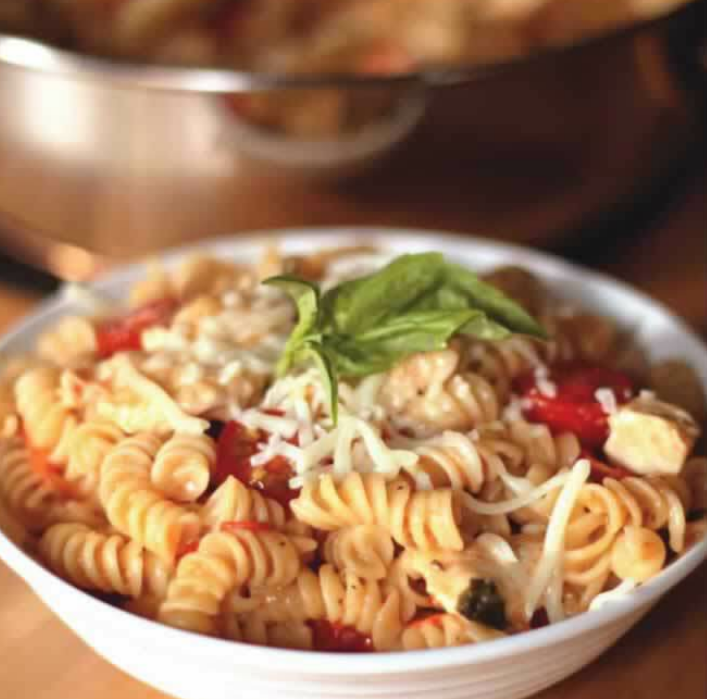 One Pan Italian Pasta
One Pan Italian Pasta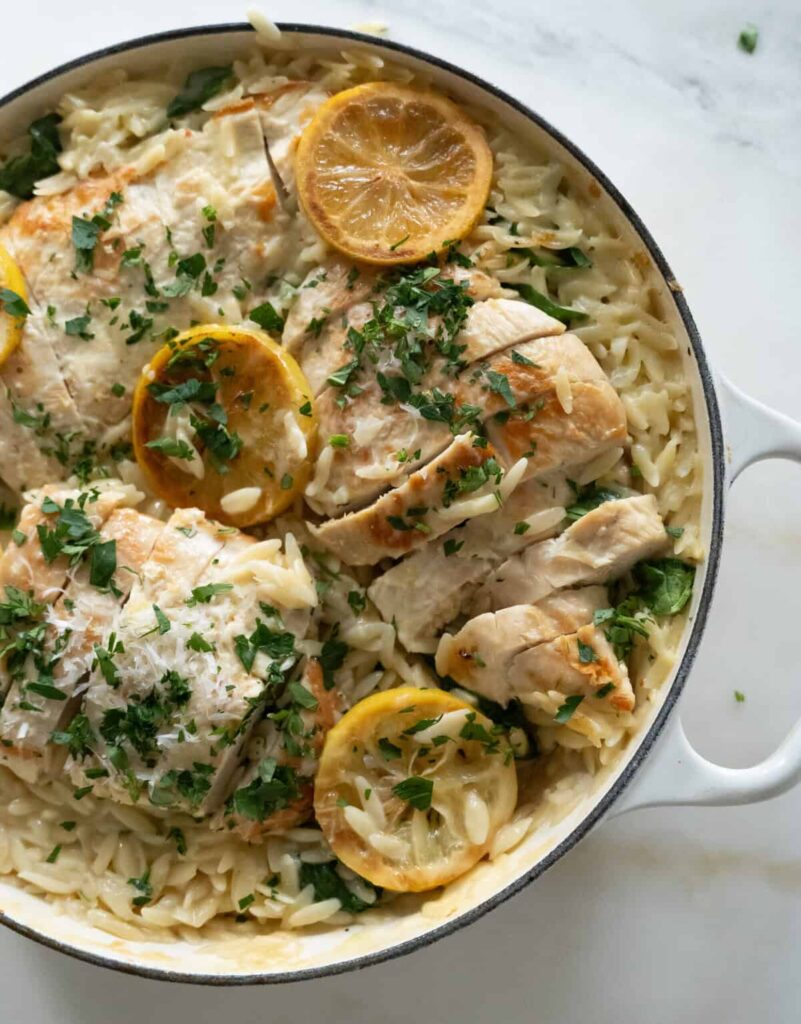 One-Pan Chicken Orzo
One-Pan Chicken Orzo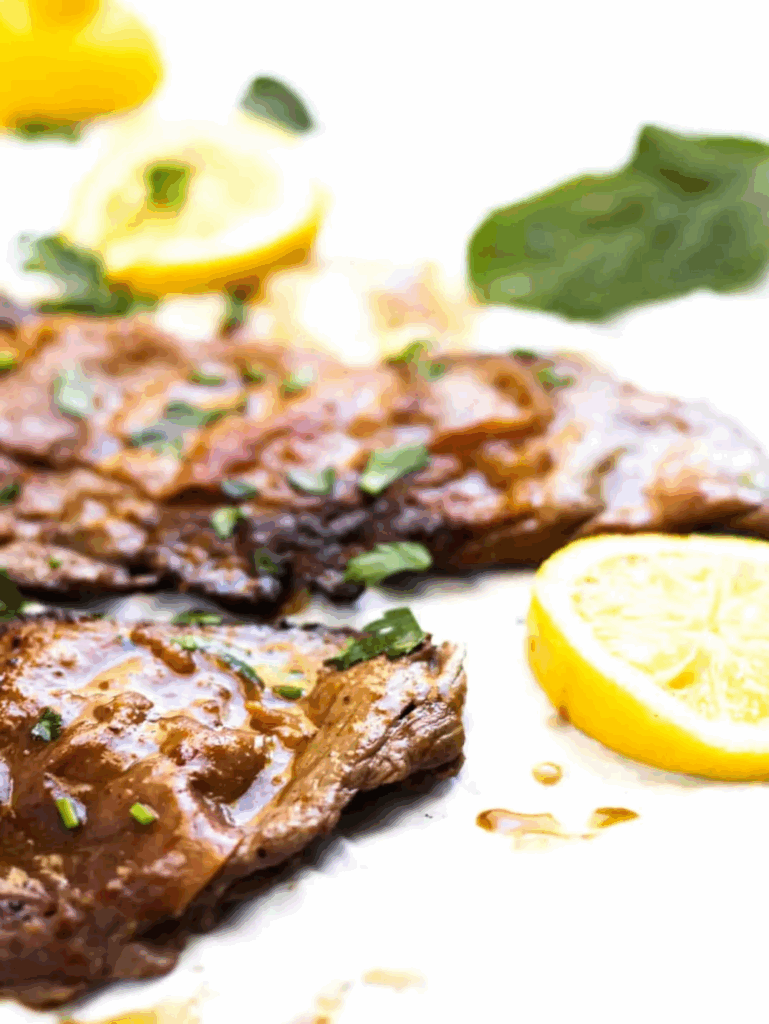 Saltimbocca alla Romano
Saltimbocca alla Romano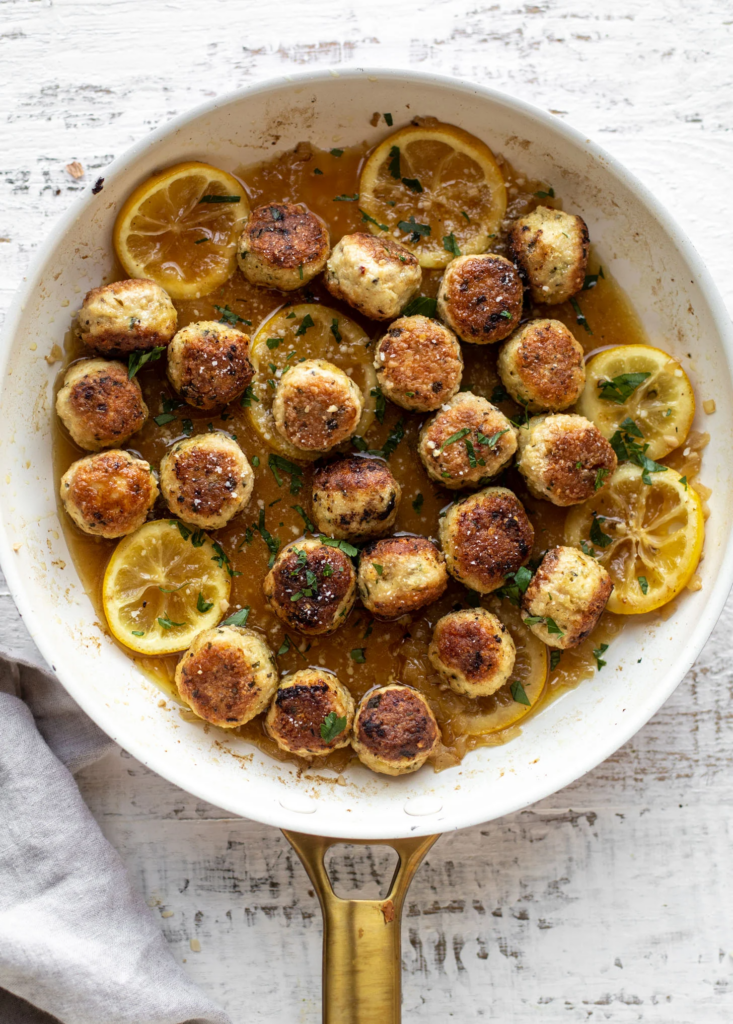 Chicken Romano Meatballs
Chicken Romano Meatballs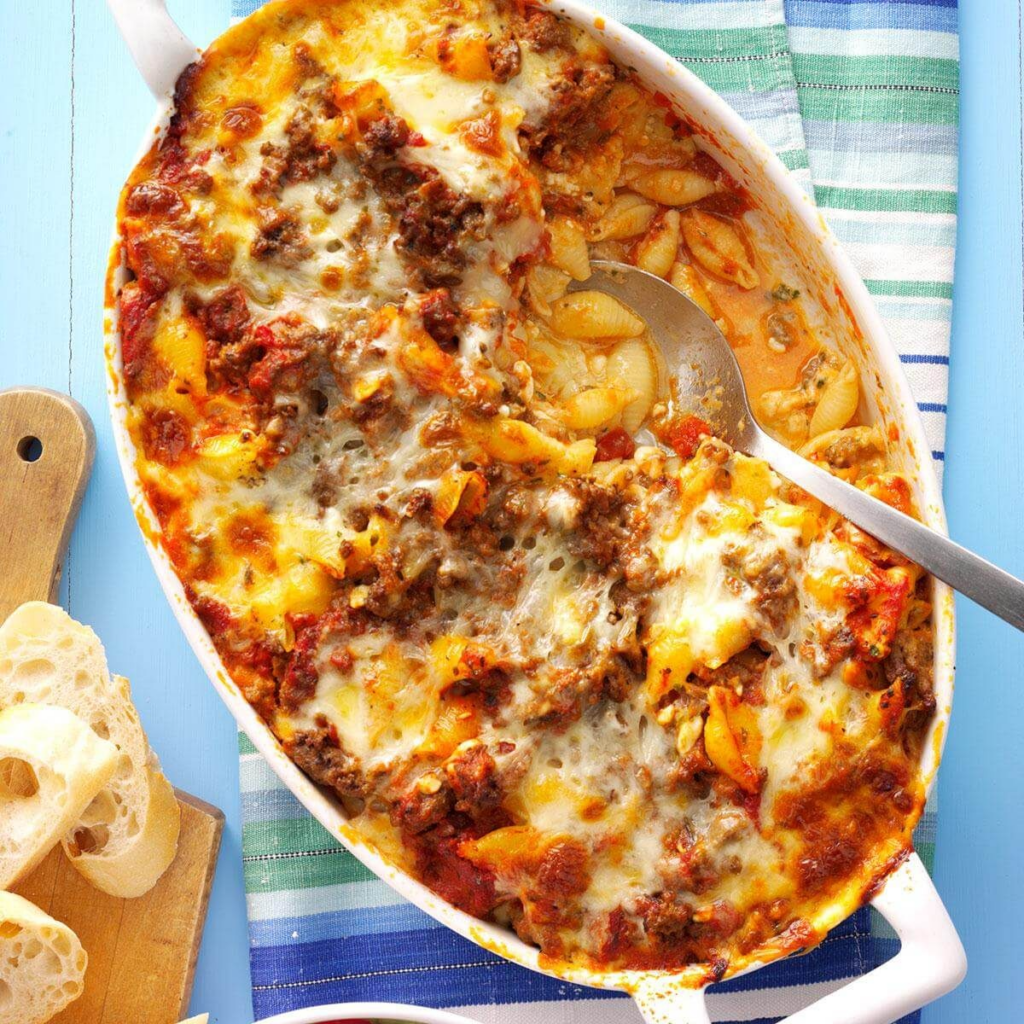 Lasagna Casserole
Lasagna Casserole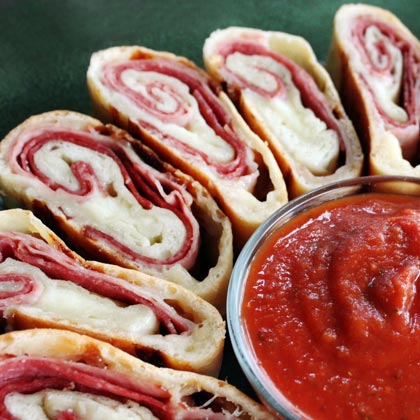 Easy Calzone Rolls
Easy Calzone Rolls Spaghetti all’assassina
Spaghetti all’assassina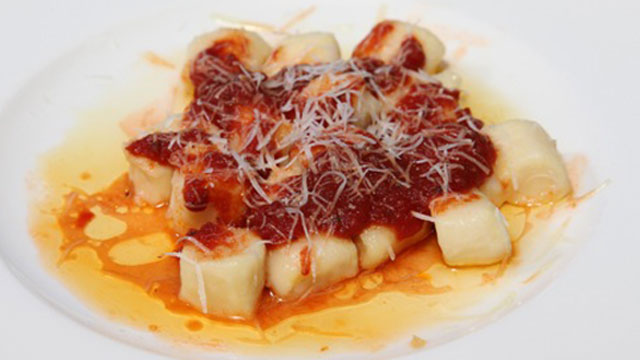 Ricotta Gnocchi with Salsa della Nonna
Ricotta Gnocchi with Salsa della Nonna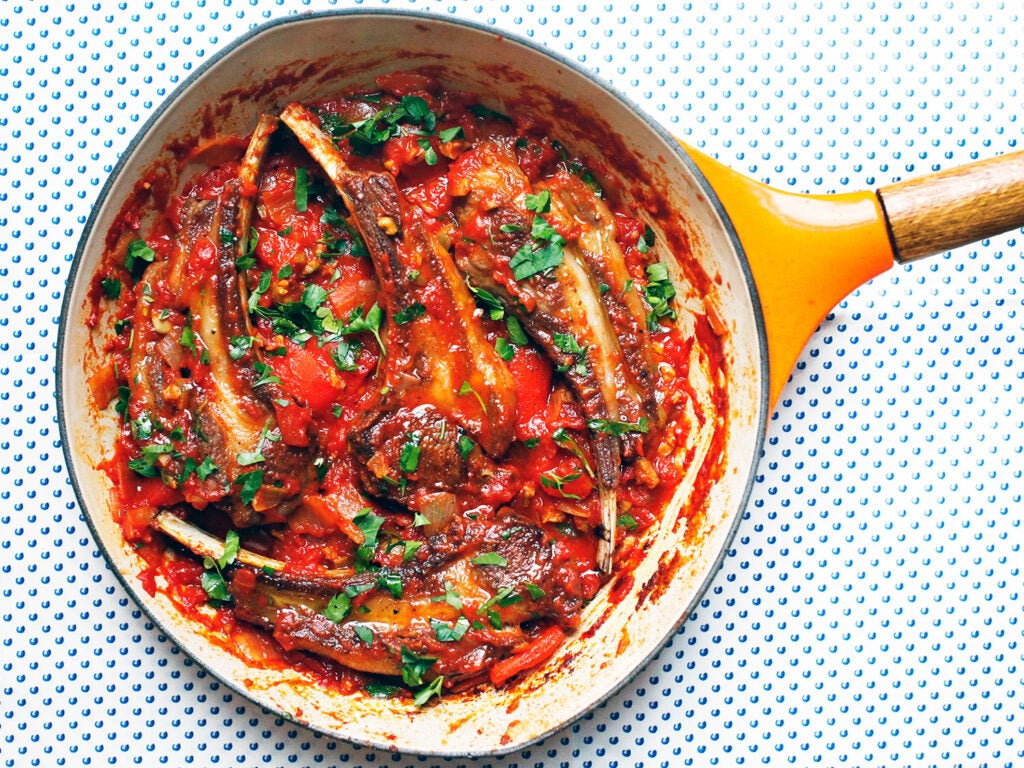 Calabrian Lamb Chops with Tomatoes, Peppers, and Olives (Costolette d’Agnello alla Calabrese)
Calabrian Lamb Chops with Tomatoes, Peppers, and Olives (Costolette d’Agnello alla Calabrese)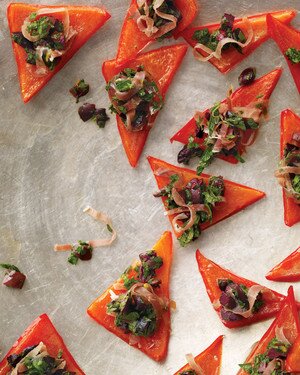 Red Pepper Triangles with Italian Relish
Red Pepper Triangles with Italian Relish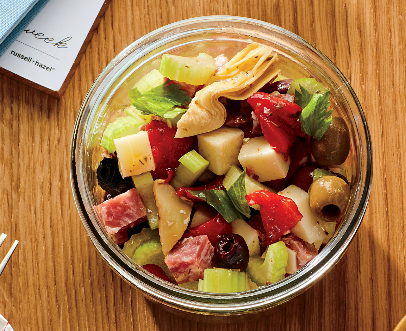
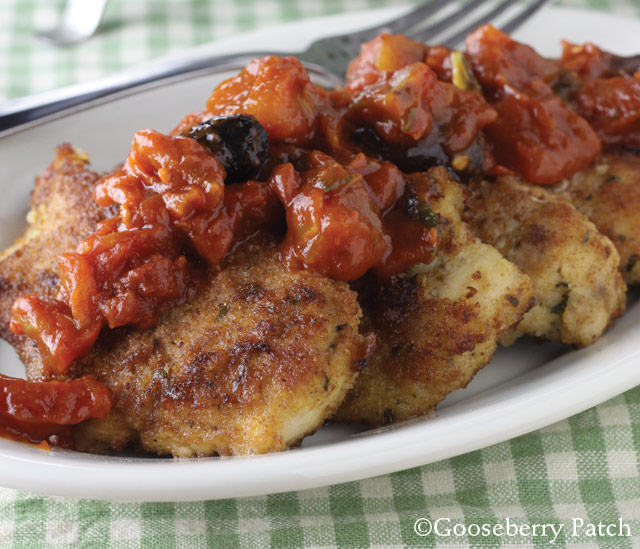
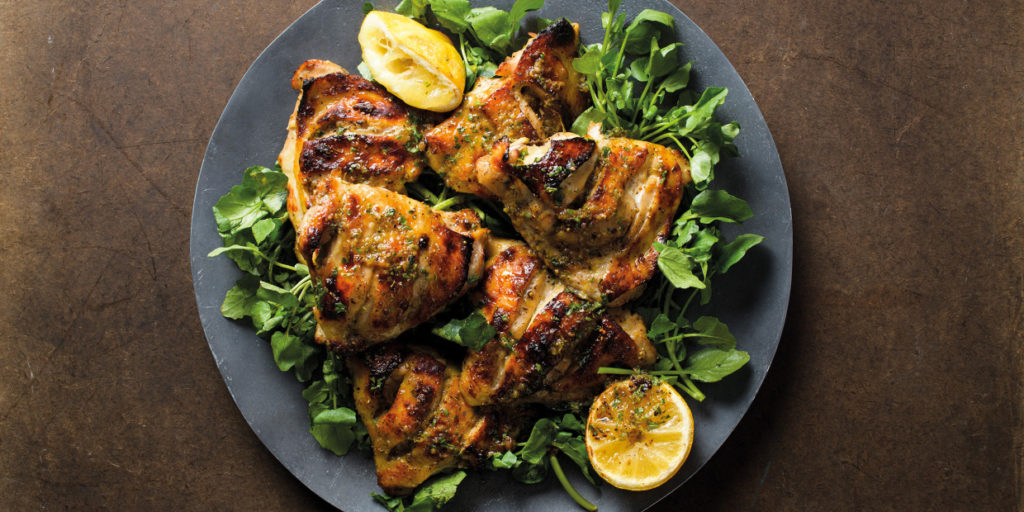 Chicken Salmoriglio
Chicken Salmoriglio
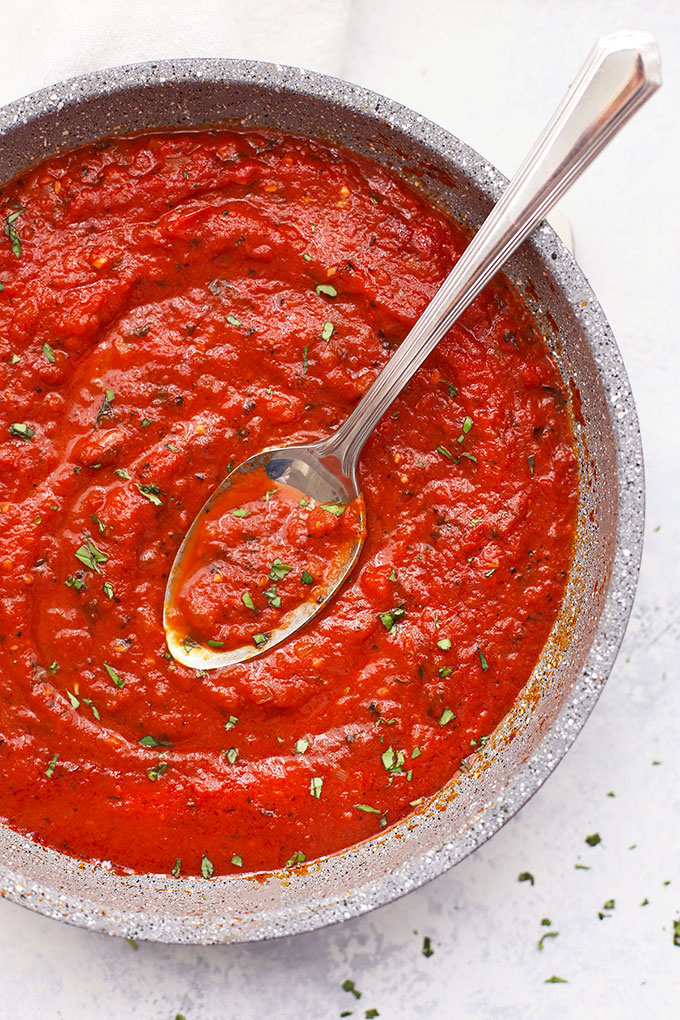 Salsa di Pomodoro della Nonna
Salsa di Pomodoro della Nonna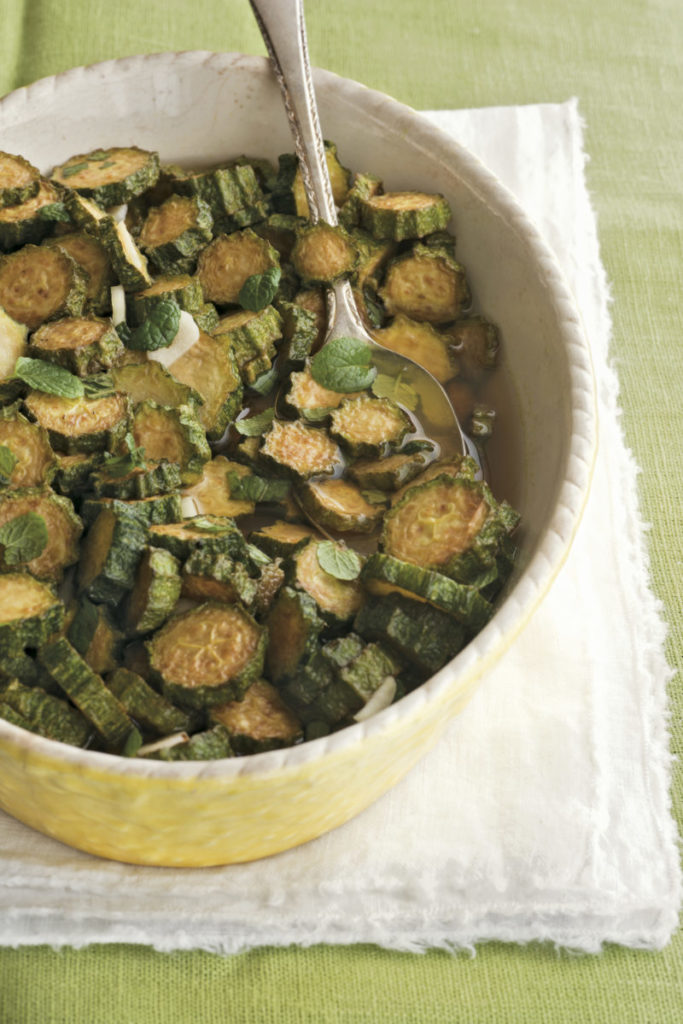
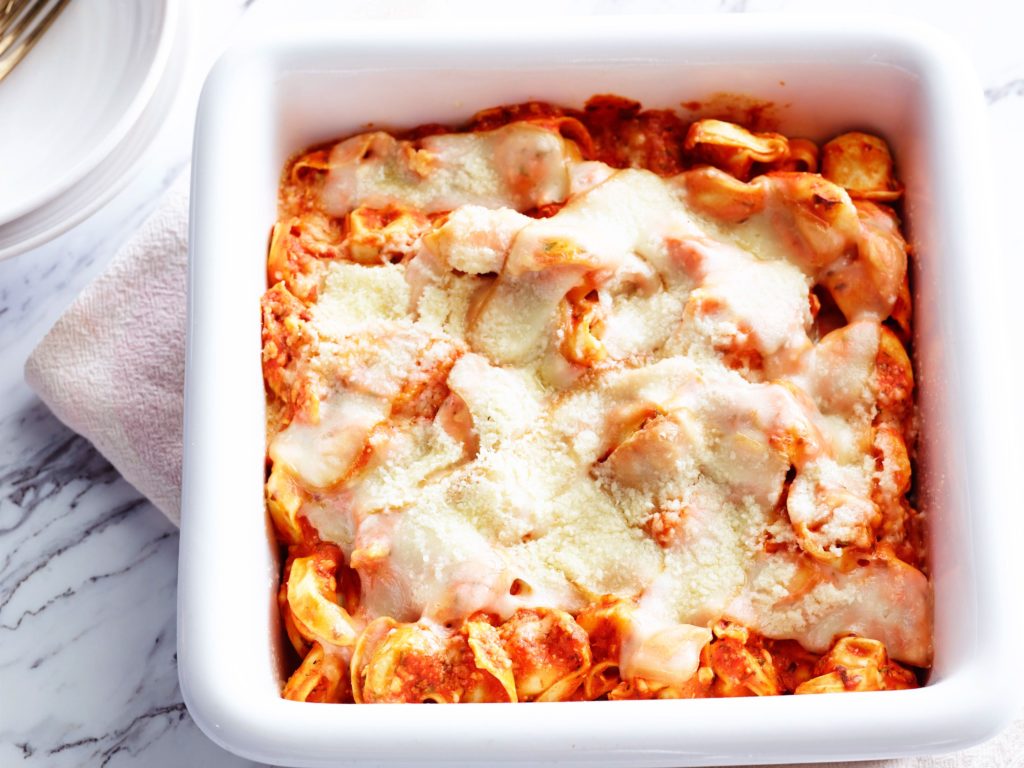
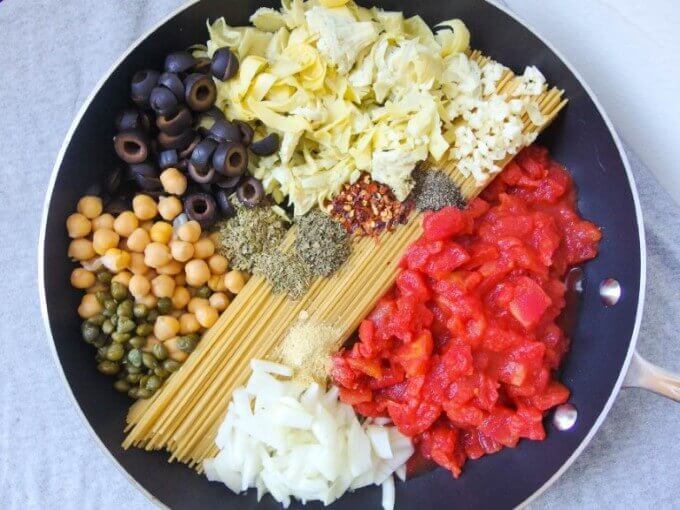
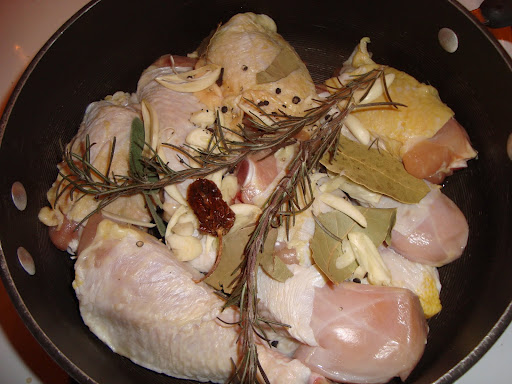
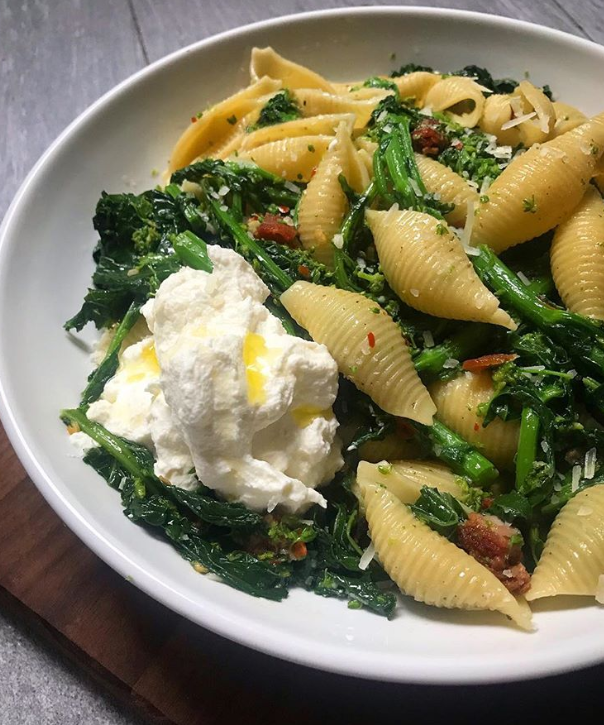
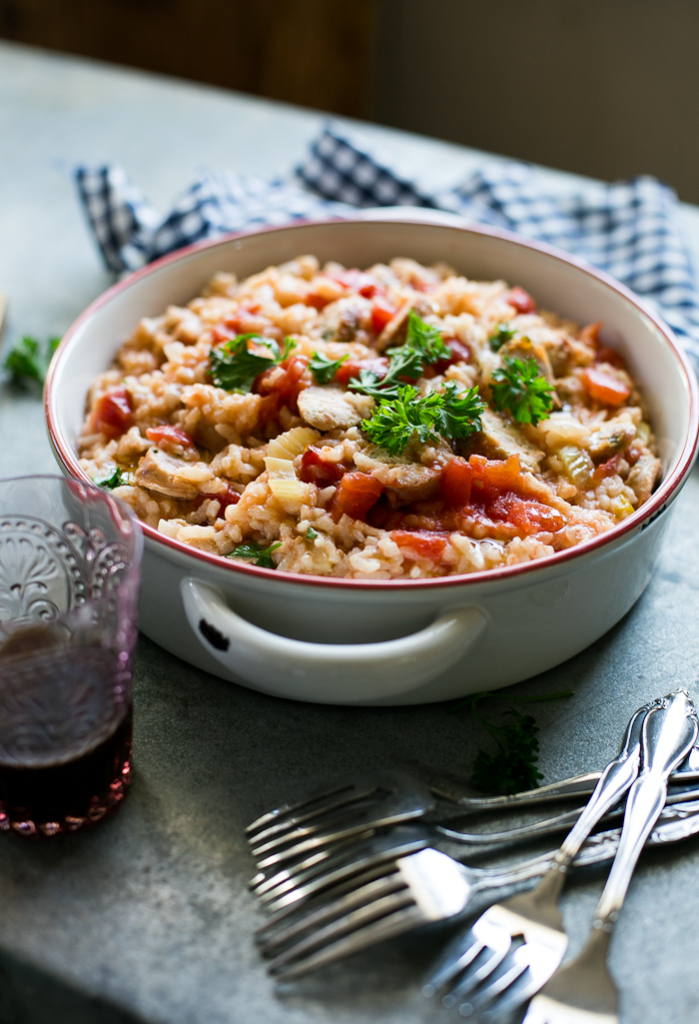 Creamy Baked Sausage Risotto
Creamy Baked Sausage Risotto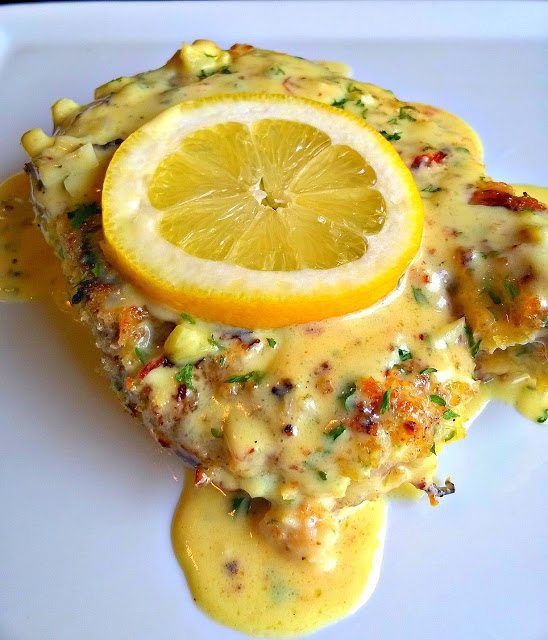 Italian Lemon Herb Pork Chops
Italian Lemon Herb Pork Chops

